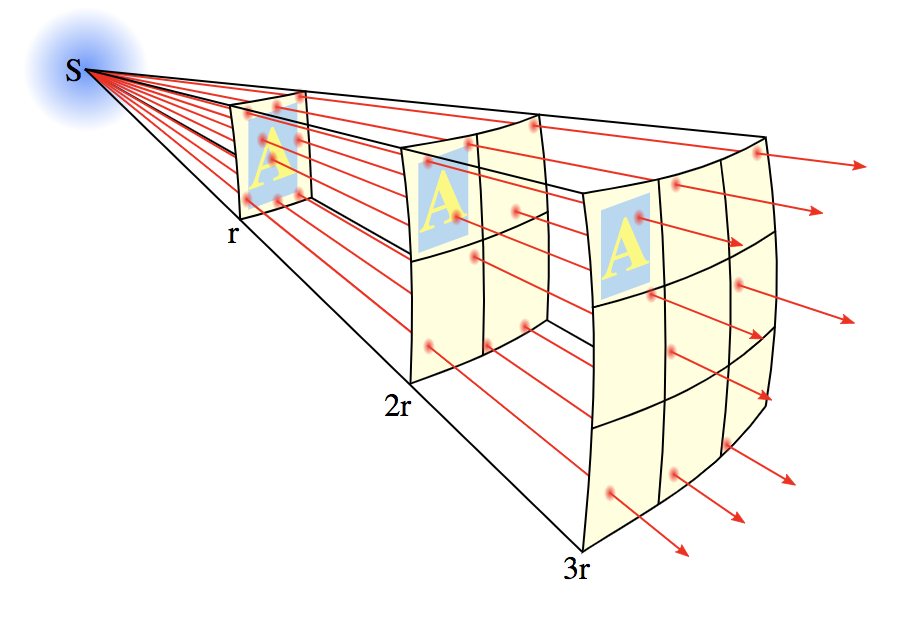光度
Contents
Luminosity
$\color{red}{Luminosity}$ is an absolute measure of radiated of electromagnetic power, the radiant power emitted by a light-emitting object. $\color{red}{Particularly\ in\ astronomy}$, luminosity is the total amount of electromagnetic energy emitted per unit of time by a star, galaxy or other astronomical object.
Flux density
$F={L\over A}={L\over 4\pi r^2}$
Where,
A is the area of the illuminated surface
F is the flux density of the illuminated surface
r is the distance from the observer to the light source

Figure1: Point source S is radiating light equally in all directions. The amount passing through an area A varies with the distance of the surface from the light.
More generally, for sources at cosmological distance, a K-correction must be made for the spectral index $\alpha$ of the source, and a relativistic correction must be made for the fact that the frequency scale in the emitted rest frame is different from that in the observer’s rest frame.
So, assuming isotropic emission:
$L_v={F_{obs}4\pi D_L^2\over (1+z)^{1+\alpha}}$
Where, $L_v$ is the luminosity in $W\ Hz^{-1}$, $F_{obs}$ is the observed flux density in $W\ m^{-2}\ Hz^{-1}$, $D_L$ is the luminosity distance in meters, $z$ is the redshift, $\alpha$ is the spectral index.